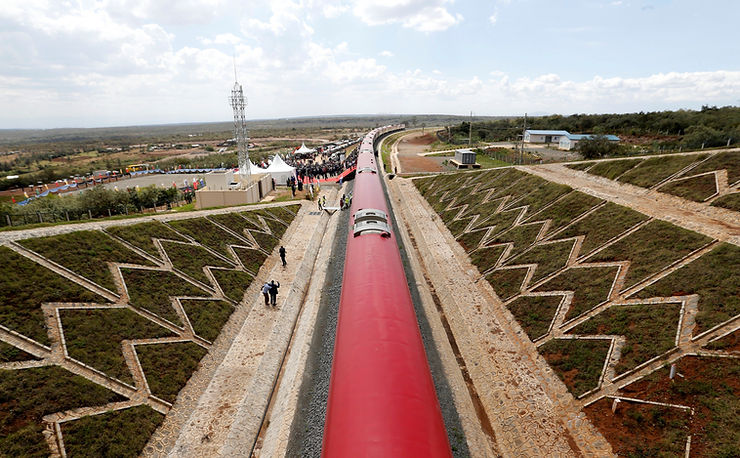By: Ray Zhao
Everyone in Kenya’s port city of Mombasa was happy when the Standard Gauge Railway, a railway stretching more than 360 miles from Mombasa to the town of Duka Moja, opened. Confetti and fireworks were a common sight, and the president of Kenya himself said that Kenyans should be “proud” of this “historic moment.”
Despite this promising start, the SGR has fallen apart. Lawsuits have been filed against it, criminal investigations over corruption have begun, and environmentalist and trucker protests have commenced. The railroad represents the corruption and greed among the political elite in Kenya.
The railway represents the height of the borrowing and looting spree that has plagued Kenyan President Uhuru Kenyatta’s government. Since he took office in 2013, Kenyan debt has already increased five-fold. With the building of the railroad, which finished in June 2017, more criticism has sprung up.
Activists and opposition figures have accused senior politicians of inflating costs and profiting from the railway. Meanwhile, environmentalists were angry that the railroad cut through Nairobi National Park. And in 2018, more than a dozen officials were charged with paying more than $2 million to individuals and companies that falsely claimed to own land along the railway. In addition, the Kenyan Parliament recently disclosed that millions more dollars were wrongfully paid, either by overpayments or payments made without clear documentation.
What economists call an “economic, social and fiscal disrupter” has been funded by China and their trillion-dollar “Belt and Road” initiative. Though the railway increased travel speed and the amount of freight transported, experts say that the $4.7 billion used to create the railroad still might crush Kenya’s economy.
The more than 10,000 people who lost their jobs due to the railway are angry, too. Lawrence Boy, a truck driver in Miritini, a suburb of Mombasa, accused the government of “demonizing” truck drivers, also pleading, “we are citizens of [Kenya] … and deserve equal rights.”
The entire railroad and the debts, scandals, and anger surrounding it is a controversial subject in the upcoming Kenyan elections, where William Ruto and Raila Odinga are head-to-head in an unpredictable race. The two candidates have done the customary “promising” to reassess its operations while distancing themselves from the project.
Mr. Ruto, a candidate for the election and the vice president when China began building the railway, said that the debt Kenya owes places the country in a “very precarious” situation, while Kenya was also “hurting” from paying Chinese debt.
Ruto’s opponent, former prime minister Mr. Odinga, has long been critical of the project and has accused people in power of benefiting from the building of the railroad. He recently said he would “fix it” once he was in office.
However, there are signs of moving past this corrupted and painful past. While Mr. Odinga has promised to overhaul the railroad’s operation, Mr. Ruto has vowed to publish the contract. Activists hope that would allow the public to scrutinize it.











